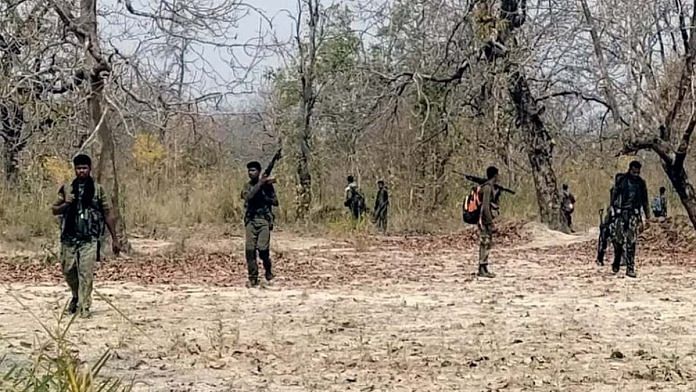Raipur: On 5 February, 48-year-old Nilkanth Kakkem was returning home after attending a relative’s wedding at Penkram village in Chhattisgarh’s Bijapur district when he was suddenly surrounded by a group of axe-wielding men. As his nephew watched horrified, the men allegedly hacked him to death.
Five days later, on 10 February, Sagar Sahu, a resident of Chhottedongar in Narayanpur, opened the door of his house at around 8pm. Two bike-borne assailants allegedly riddled him with bullets before making their escape.
The following day, on 11 February, a group of men stopped 43-year-old Ramdhar Alami of Hitameta village in Dantewada while he was on his way back home after a puja in Tultuli village. They allegedly brutally slashed him with sharp weapons and brought his dead body back to his village.
There were two common threads in the three killings. One was that Maoist extremists took responsibility for them, although no one has been arrested yet.
The other was that all the victims were functionaries of the Bharatiya Janata Party (BJP).
The first victim, Kakkem, was the president of BJP’s Usur mandal in Bijapur. Sahu was the Narayanpur district BJP vice-president, while Alami was the former sarpanch of Hitameta village and a BJP worker.
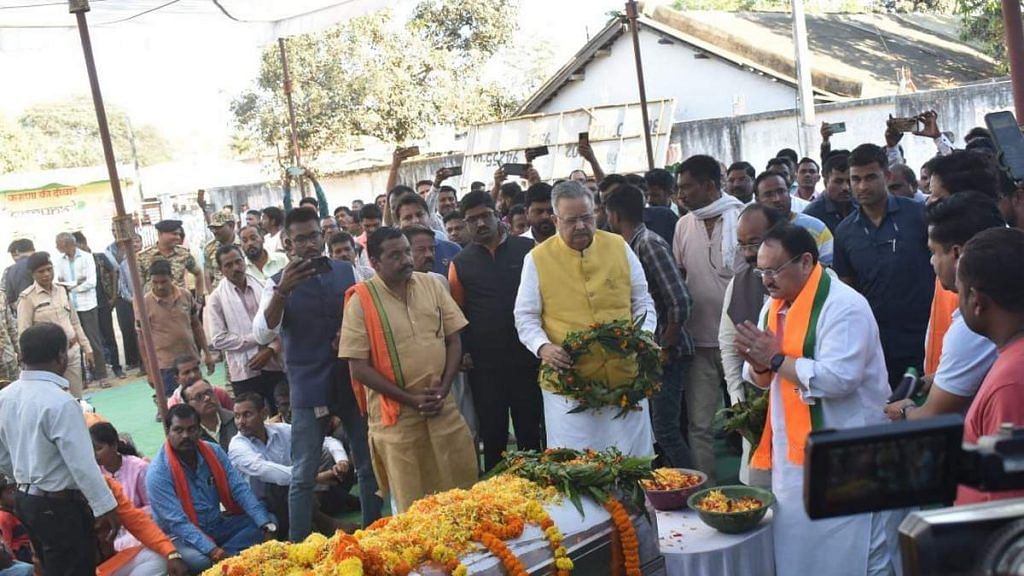
The murders have predictably caused a political firestorm in Chhattisgarh, where the Congress is in power and assembly elections are just months away.
Last week, the BJP staged protests across the state over the law-and-order situation and “targeted killings” of party workers. State BJP leaders have also alleged that the Congress collaborated with Maoists to silence the opposition ahead of polls.
The Congress has dismissed these allegations as pre-election slander, also pointing out that the state government has asked the National Investigation Agency to probe the three killings.
However, the heart of the story may be getting lost in the political rhetoric.
ThePrint spoke to senior police officials in Chhattisgarh, who said that Maoist violence is primarily driven by a desire to create terror as a way to bolster their own relevance in the tribal region, where they have been losing popularity.
Further, the self-professed perpetrators of all three murders later made it clear that they went after the three BJP members for reasons other than their party affiliations. While the Maoists accused Kakkem and Alami of being police informants, they claimed Sahu was a “pimp” for a mining project.
But Bastar inspector general Sunderraj P. said that the real reason that the Maoists were allegedly killing people was to create a “sensation”.
“This is not a new strategy. On an average they strike and kill five to six individuals every year. This is just to create fear among people and public administrators, irrespective of party affiliations,” he added.
Police data accessed exclusively by ThePrint also shows that Maoist violence follows a pattern of cyclical flare-ups. And over the years, more members of the Congress than the BJP have fallen victim.
Also read: In Chhattisgarh, Bastar now poll battlefield as BJP targets Baghel govt over party workers’ deaths
‘Police informants, corrupt’
The Naxal groups purportedly behind the killings of Kakkem, Sahu, and Alami are still in the shadows, but they have boldly announced their motives, police officials have said. However, the police also advise taking these purported “reasons” with a pinch of salt.
Soon after, Sagar Sahu was killed, a “warning” in the form of a pamphlet came into circulation in the area, attributed to a Maoist group called the People’s Liberation Guerrilla Army (PGLA).
The note, of which ThePrint has a copy, stated in Hindi: “The RSS (Rashtriya Swayamsevak Sangh) and BJP president was given the death sentence by the PGLA on popular demand. He is a pimp for Aamdai Ghati and an agent of the Neco company. This is a warning to not be a pimp for these companies.”
The reference here was to an iron-ore mining project allotted to Jayaswal Neco Industries in Narayanpur’s Dongar Hills in the Amdai Ghati area. The Maoists are opposed to the project, over which other incidents of violence have also taken place. In 2021, Maoists allegedly attacked the site, killing one person.
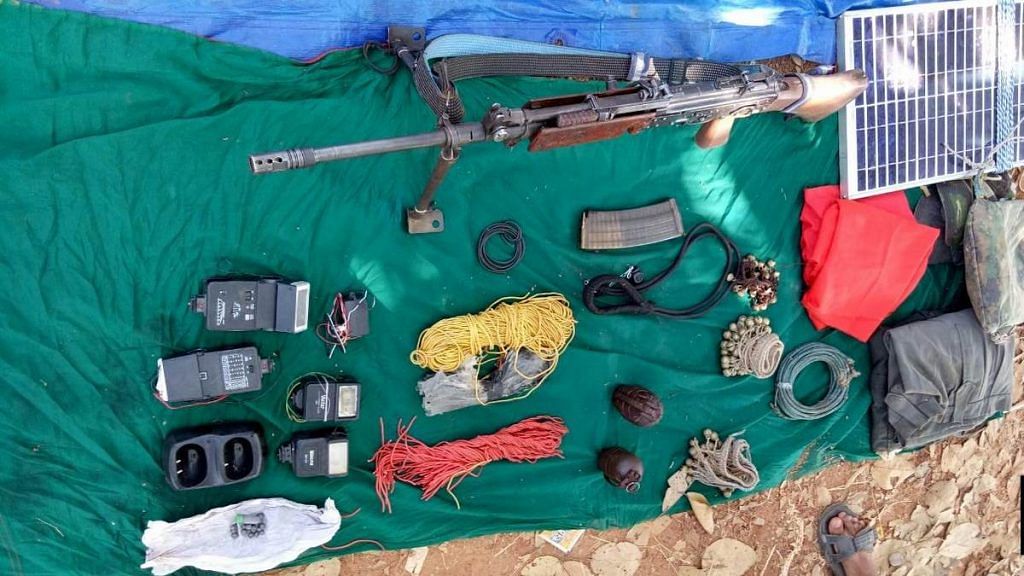
For the killing of Ramdhar Alami, the “reasons” given were different. A pamphlet placed near his body, and purportedly signed by PGLA Maoists, claimed he was murdered for being a “police informant” who encouraged the surrender policy. The note also alleged that he made money out of the Bodhghat Dam.
This is a project that Chhattisgarh’s Bhupesh Baghel-led Congress government had revived in 2021 after a long hiatus, leading to local protests over expected displacement of tribal residents.
The note, seen by ThePrint, said: “From 2012-2017, (Alami) has been an informant, a secret soldier. He encouraged the surrender policy and was also corrupt. He was warned thrice to not act like a police informant. He was given the death sentence by PGLA because he was not listening.”
In the case of Kakkem, no pamphlet has been found but police sources said that villagers had conveyed that Maoists had targeted him since they believed him to be a police informer too.
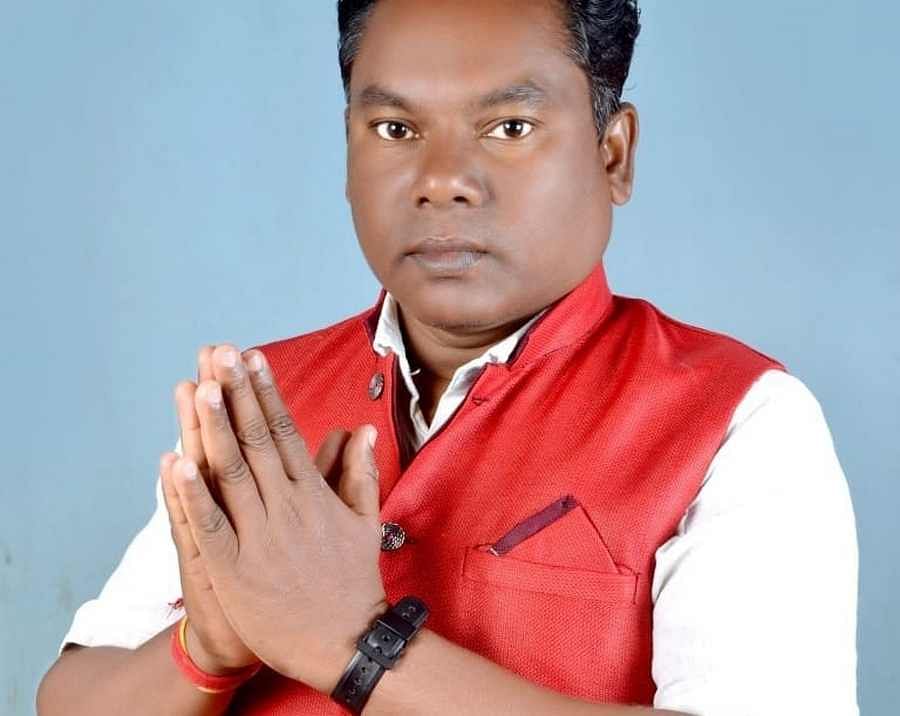
However, additional director general (ADG), Chhattisgarh Police, Vivekanand Sinha, who holds the charge of Naxal Operations, told ThePrint that the Maoists’ purported “justifications” should not be taken at face value.
“When they carry out these killings, they have to justify them in the eyes of the locals. The real motive is to terrorise them, send out a message, and strengthen their hold so that none of the villagers dare to go against them,” he said.
‘Maoists don’t care about party cadres’
The spate of killings this month should not be seen as “political”, but instead as a sign that the Maoists are getting “desperate” to regain their footing in the region, said ADG Sinha.
“These are isolated incidents and have nothing to do with the deceased being from the BJP. The Maoists do not care about party cadres,” he added.
Police data accessed by ThePrint shows that every year, three to four “political killings” are reported from Chhattisgarh, cutting across party lines. If anything, members of the Congress seem to have come in the firing line most frequently.
In total, since 2001, 48 BJP members, 64 Congress leaders and seven from other parties have been killed by Maoists in Chhattisgarh, according to the data.
The break up for the past six years or so illustrates the varied patterns of these “political killings”.
In 2017, two Congress leaders were killed by Maoists. The following year, two BJP leaders and two Congress leaders were killed. In 2019 one BJP, one Congress, and one leader from another party was killed.
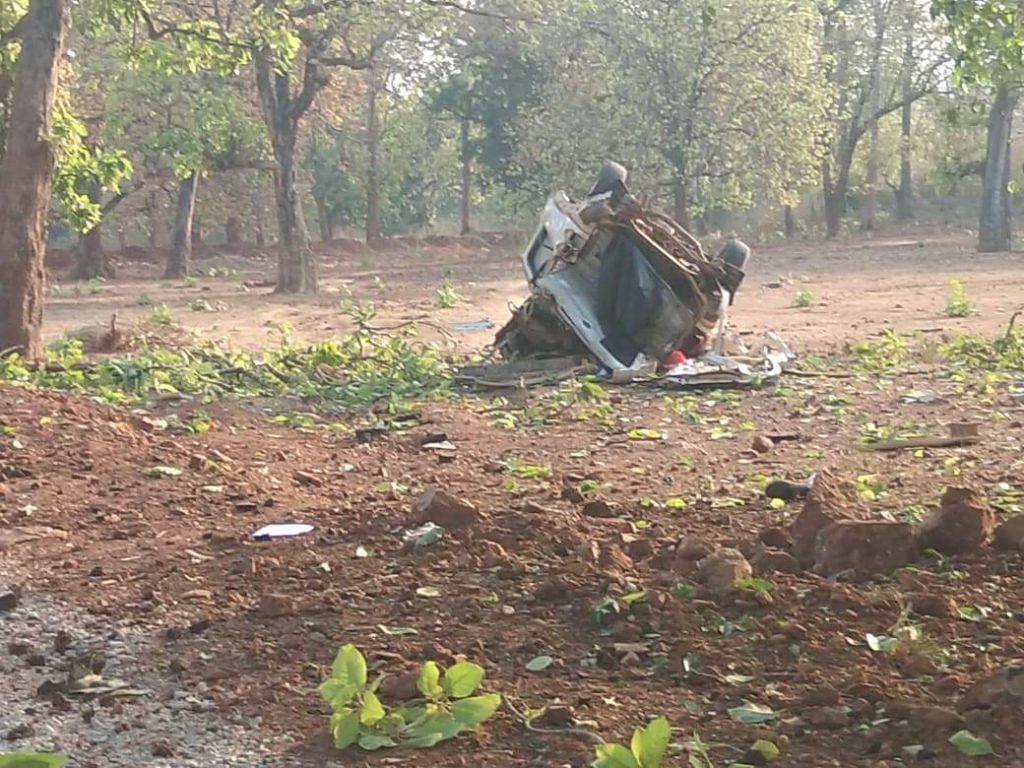
In 2020, again three BJP leaders and one Congress leader were killed. In 2021, two Congress leaders were killed and there was no one from the BJP; in 2022, one BJP leader was killed and there were none from the Congress. In 2023, till now, the three BJP leaders are come under the “political killings” category.
Data on civilian killings in Chhattisgarh also shows it to be a recurring phenomenon. In 2017, 52 civilians were killed by Maoists, in 2017, the number went up to 57 and in 2018, 89 civilians were killed. The following year, 48 civilians were killed, in 2020 48 civilians were killed and in 2021 43 civilians were killed. In 2022, the number dipped to 36 and in 2023, eight civilians have been killed in the past two months.
“The Maoists are doing these killings because they are desperate,” Sinha explained. “Their base is eroding since we have started opening up police camps in the interiors. Their support base among the tribal population has also gone down. They are unable to gather people for protests against the government or the police and thus they are terrorising them by doing these killings.”
He added that the Maoists were “jittery” since the law-and-order situation in their hunting grounds had improved “significantly”.
A drop in violence, but the threat remains
At a public meeting in Korba this January, Union Home Minister Amit Shah had said that the central government aimed to eradicate the Maoist threat by 2024. The killings of the three BJP workers has raised concerns that this violence is growing worse, but officers in the security apparatus say this is not the case.
Speaking about the Naxal situation in the state, the local police as well as officers of the Central Reserve Police Force (CRPF), deployed in key areas, claimed that overall attacks on security forces, civilian killings and explosions and blasts have decreased in the past five years.
They added, however, that spates of violence are still part of a “cycle” that repeats every few years. The data also makes it clear that while incidents of Maoist-related violence have dwindled overall, the threat has not faded entirely.
According to official data from Bastar, a Maoist stronghold, 497 incidents of violence attributed to the extremists were reported in the district in 2017. The following year, 2018, saw a marginal drop and 462 such incidents were reported.
In 2019 and 2020, 330 and 334 cases were reported respectively, dropping to 253 in 2021. Last year, 2022, saw 240 such incidents. In the first two months of 2023, 30 such incidents have been reported.
“If we look at data, the incidents of violence since 2017 have come down by 70 per cent in Bastar,” a senior police officer said on condition of anonymity.
The number of personnel from security forces killed by Maoists across Chhattisgarh has also seen a decline. In 2018, 55 security personnel were killed by Maoists. The numbers for 2019, 2020, 2021 were 28, 20, and 37, respectively. In 2022, there were just six such deaths and no such case has been reported so far this year.
The incidents of attacks on security forces have also gone down. In 2018, 151 such incidents were reported, which dropped to 69 incidents in 2022. In 2023, three such incidents were reported.
Data on explosions and blasts shows that in 2018, 54 incidents were reported which saw a marginal slide in 2021, when 32 incidents were reported. In 2022, 29 such incidents were reported and in 2023 so far, two explosions have been reported.
Regarding instances of Maoists snatching weapons from security forces, there was a steady increase in such incidents after 2018, but 2022 bucked the trend.
In 2018, there were six incidents wherein the Maoists snatched weapons from police parties carrying out operations. In 2019, there were eight such incidents, followed by 19 and 14 in 2020 and 2021 respectively. In 2022, though, there was only one such incident reported.
Camps set up, roads opened, shrinking Maoist territory’
Senior officers in the police and security forces attribute their increased operations to reducing the range of Maoists to only a few kilometres in former bastions like south Bijapur, south Sukma, Indravati National Park, Abujmarh, and Koyalibeda.
However, sources said that Maoists still have a strong presence in the south Bastar area bordering Bijapur and Sukma.
“To stop their expansion, several camps are being set up in the areas where earlier the police or forces had no access. The local tribal communities also now are not supporting the Maoists, which has made them desperate,” said IG CRPF, Chhattisgarh Sector, Saket Kumar Singh.
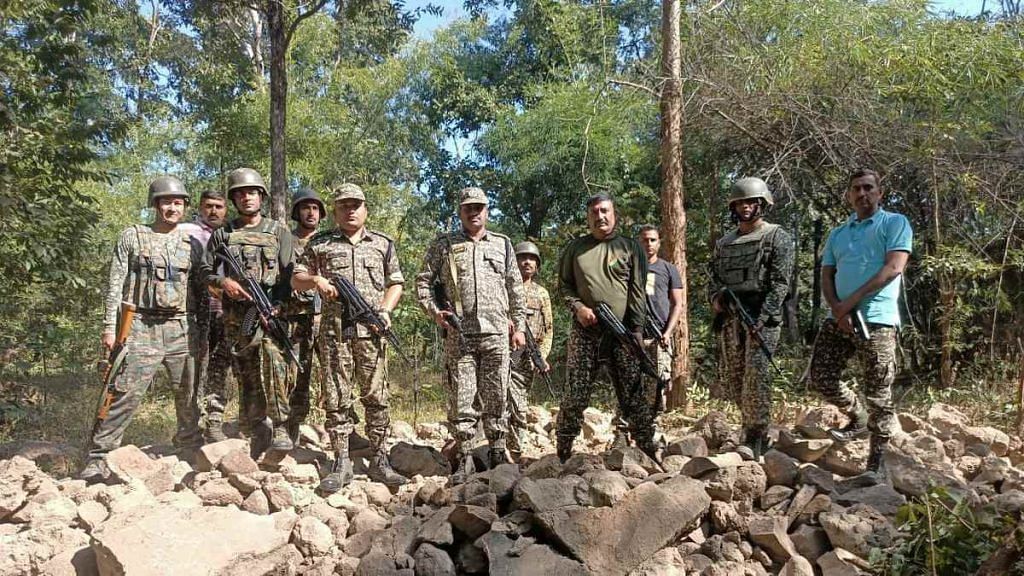
“The situation has improved significantly. Our focus is on opening of camps, roads and reducing their territory. We are also ensuring that more and more of them surrender,” he added.
The numbers of Maoists surrendering or being arrested, though, have not showed a significant change.
In 2018, 465 Maoists surrendered, followed by 315 in 2019. In 2020, 344 surrendered followed by 554 in 2021. In 2022, the surrenders came down to 416 and in 2023, 92 Maoists have surrendered till now.
In 2018, 1,251 Maoists were arrested, but only 260 arrests were made in 2022. In 2023 so far, 52 Maoists have been arrested.
The focus of all agencies working in Chhattisgarh, however, is to reduce Maoist territory of operation.
Describing the situation in Bastar, the senior police officer quoted earlier told ThePrint that the region had 994 Maoist-heavy gram panchayats, home to 2,710 villages. Of these villages, he claimed 559 had been “freed from Naxal control and 262 schools in the area have also been opened.”
“In 2018, the Naxal problem was spread across two-thirds of the state. Areas like Dhamtari, Kabirdham, and Raigarh in central Chhattisgarh were a challenge. A lot of political leaders and civilians were killed, the roads were closed, schools were also shut down,” the officer said.
He added: “But with the government’s intervention, 15 base camps were started. Bridges and roads have been built. Some roads that were shut for the last 20-25 years have also been started again,” he added.
According to official data, 58 new base camps have come up in Bastar, Dantewada, Kondagaon, Bijapur, Kanker, Sukma, and Narayanpur after 2018. Moreover, 51 roads spread across 1,616 km have also been completed. In south Bastar alone, 375 km of roads where there was a “security vacuum” are also being built, the officer said.
‘Conspiracy’ or politics?
BJP leaders in Chhattisgarh allege that the killings of party workers were part of a “larger political conspiracy” by the Congress.
Speaking to ThePrint, Arun Sao, Chhattisgarh BJP president said that the killings were an attempt to “intimidate the opposition” ahead of state elections.
“This is no coincidence, but a well-planned conspiracy by the Congress party. They want to intimidate us so that our people do not step out to visit their areas for any welfare activities or campaigns,” he said.
Sao added that the Congress party has lost support in villages and that is what is making them “anxious”
“They know that they are going to lose which is why they are now using fear to keep our party workers inside. First, they took away the security of most of our leaders, then they got these killings done to intimidate others. This plan has been hatched by the Congress party,” he added.
Countering these claims, Congress spokesperson Sushil Shukla said that when BJP was in power, 118 Congress party workers, including block, district and youth presidents, were killed in Naxal attacks between 2004 and 2018, but this was never turned into a political issue.
“For 15 years, when the BJP was in power, so many of our party workers were killed by Maoists. But we never called it a political conspiracy. The killings are unfortunate, but to say that we are involved with the Maoists is stooping to a new low. It is proof that they have no better issue to raise,” he said.
“In May 2013, when an entire convoy of Congress leaders was attacked in Jhiram Ghati and 27 lives were lost, the BJP did not allow a probe by an external agency,” Shukla claimed. “Here, we have ourselves asked NIA to probe the three killings. We have nothing to hide.”
(Edited by Asavari Singh)
Also read: Adivasi identity, ST status, politics — what’s fuelling anti-Christian attacks in Chhattisgarh


